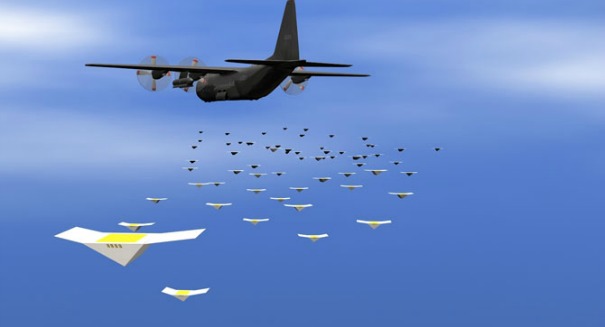
Called the Cicada, these tiny robots could have sensors attached to them and swoop into enemy zones from above.
The Pentagon is developing swarms of military drones small enough to fit in the palm of your hand could be dropped from aircraft or balloons and descend onto the enemy.
Dubbed the Cicada — the reclusive insect that stays underground before emerging in great swarms every few years to reproduce before dying — these “micro air vehicles” are under development at the Naval Research Laboratory, according to a Discovery News report.
Cicada is actually short for Covert Autonomous Disposable Aircraft, and it is designed to be much smaller and inexpensive compared to a typical unmanned aerial vehicle, while still performing many of the same essential missions in combat.
These tiny robots could cost about $250 apiece after economies of scale are realized, and a prototype was only $1,000 — although, of course, you’ll have to buy a lot of them and the cost will add up.
It’s a deceptively simple design, consisting of just 10 parts and resembling a paper airplane that has a circuit board on it, able to track GPS coordinates after being dropped from an aircraft or even a larger unmanned aircraft.
Developers actually tested these drones in the desert of Yuma, Arizona, by dropping them at nearly 60,000 feet. They fell 11 miles and landed within 15 feet of the target they were aiming for. These tiny pieces of machinery can actually fly at a brisk 46 miles per hour, and because they have no engine and just glide, they are silent. In fact, it would probably resemble a bird to the naked eye, assuming you’re able to pick it up before it’s too late.
As for what they would be useful for, developers plan to put sensors on the Cicada that could track weather readings including temperature and air pressure. As for its military uses, no doubt someone at the Pentagon will be able to think of all sorts of gadgets that could help out troops.